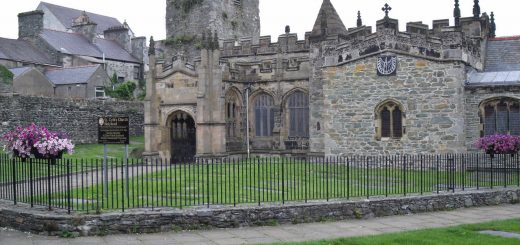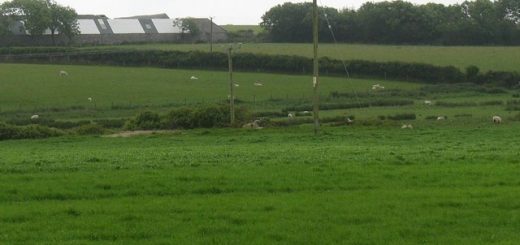Sanctuary (aka Hakpen)
The ancient site known as the Sanctuary can be found on Overton Hill (aka Hakpen Hill) at the start of the Ridgeway footpath. Dating from 3000BC it is the site of a stone circle which marked the end of the West Kennet Avenue. Described by John Aubrey (Born 12 March 1626 – Died 7 June 1697) as a double ring of stones, over time it was gradually destroyed. During the time of William Stukeley (Born 7 November 1687 – Died 3 March 1765) it still had a number of its stones but these were lost before the 20th century. The site was found again by Mrs. Maud Cunnington in 1930 though the stones themselves by then were gone.
 Stukeley referred to the circle as hakpen or serpents head as he saw the avenues and the stones in the Avebury group as a representation of a large serpent. Hence he also referred to Overton Hill as Hakpen Hill.
Stukeley referred to the circle as hakpen or serpents head as he saw the avenues and the stones in the Avebury group as a representation of a large serpent. Hence he also referred to Overton Hill as Hakpen Hill.
According to Rude Stone Monuments by James Ferguson (1872) ‘The second member of the Avebury group is the double circle, or rather double oval, on Hakpen hill — Haca’s Pen; this was, according to Stukeley, 138 feet by 155 feet, and had an avenue 45 feet wide, as compared with 51 feet which Sir R. C. Hoare gives for those of the Kennet avenue of Avebury. The avenue is supposed to have extended in a perfectly straight line for above a quarter of a mile, pointing directly towards Silbury Hill, which is about one mile and a quarter distant.
There was a small circle on Hakpen Hill, which had a stone avenue formed by six or eight stones running east and west; between West Kennet and Avebury there was another avenue leading to the circles, but trending north and south. By introducing a curved piece between these fragments, Hakpen became the head of the snake, the avenue its body; Avebury a convoluted part of it, and then a tail was added, a mile long, on the authority of two stones in the village, and a dolmen, called Long Stone Cove, about half-way between Avebury and the end of the tail!
The serpent theme was mentioned again in ‘Ophiolatreia’ (1889)* ‘The temple of Abury consisted originally of a grand circumvallation of earth 1,400 feet in diameter, enclosing an area of upwards of twenty-two acres. It has an inner ditch and the height of the embankment, measuring from the bottom of the ditch, is seventeen feet. It is quite regular, though not an exact circle in form, and has four entrances at equal distances apart, though nearly at right angles to each other. Within this grand circle were originally two double or concentric circles composed of massive upright stones: a row of large stones, one hundred in number, was placed upon the inner brow of the ditch. Extending upon either hand from this grand central structure were parallel lines of huge upright stones, constituting, upon each side, avenues upwards of a mile in length. These formed the body of the serpent. Each avenue consisted of two hundred stones. The head of the serpent was represented by an oval structure consisting of two concentric lines of upright stones; the outer line containing forty, the inner eighteen stones. This head rests upon an eminence known as Overton, or Hakpen Hill, from which is commanded a view of the entire structure, winding back for more than two miles to the point of the tail, towards Bekhampton.’
Hakpen in the old British dialects signifies Hak, serpent, and pen, head, i.e., Head of the Serpent. “To our name of Hakpen,” says Stukeley, “alludes ochim, called ‘doleful creatures’ in our translation.” Isa (13 v. 21), speaking of the desolation of Babylon, says: Wild beasts of the desert shall lie there, and their houses shall be full of ochim, and owls shall dwell there, and satyrs shall dance there.” St. Jerome translates it “serpents.” The Arabians call a serpent Haie, and wood-serpents Hageshin; and thence our Hakpen; Pen is “head” in British.
*‘Ophiolatreia’ (1889) [The Rites and mysteries connected with the origin, rise, and development of serpent worship in various parts of the world, enriched with interesting traditions, and a full description of the celebrated serpent mounds & temples, the whole forming an exposition of one of the phases of phallic, or sex worship.] by Anonymous




Recent Comments